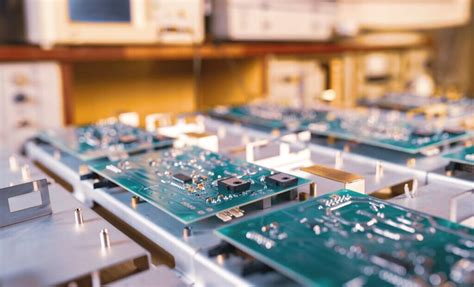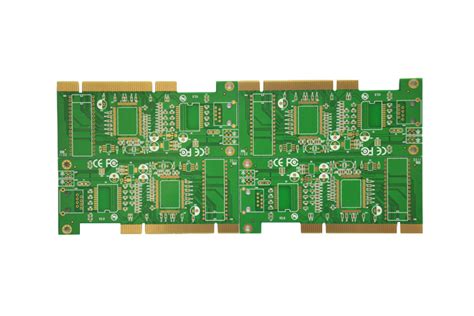Ceramic pcb thickness
Understanding The Impact Of Ceramic PCB Thickness On Thermal Management
In the realm of electronic design, the significance of thermal management cannot be overstated, particularly as devices become more compact and powerful. One critical factor influencing thermal performance is the thickness of ceramic printed circuit boards (PCBs). Ceramic PCBs are renowned for their excellent thermal conductivity, making them a preferred choice in high-power applications. Understanding how the thickness of these boards impacts thermal management is essential for optimizing electronic device performance.
To begin with, ceramic PCBs are typically made from materials such as aluminum oxide, aluminum nitride, or beryllium oxide, each offering distinct thermal properties.
The thickness of these boards plays a pivotal role in determining their ability to dissipate heat. Thicker ceramic PCBs generally provide better thermal management due to their increased capacity to conduct heat away from critical components. This is particularly beneficial in applications where high power densities are involved, as it helps prevent overheating and ensures the longevity of the device.
Moreover, the relationship between ceramic PCB thickness and thermal management is not merely linear.
While thicker boards can enhance heat dissipation, they also introduce challenges such as increased weight and potential difficulties in manufacturing. Therefore, designers must strike a balance between achieving optimal thermal performance and maintaining the structural and functional integrity of the device. This balance is crucial in applications like aerospace and automotive industries, where both weight and thermal efficiency are critical considerations.
In addition to thermal conductivity, the thickness of ceramic PCBs also affects their mechanical properties.
Thicker boards tend to be more robust, providing better support for components and reducing the risk of mechanical failure. This is particularly important in environments subject to vibration or mechanical stress. However, the increased thickness can also lead to challenges in terms of flexibility and integration into compact designs. Thus, designers must carefully evaluate the trade-offs between thermal management and mechanical performance when selecting the appropriate thickness for their specific application.
Furthermore, advancements in manufacturing technologies have enabled the production of ceramic PCBs with varying thicknesses tailored to specific thermal management needs.
Techniques such as laser drilling and precision machining allow for the creation of complex multilayer structures, enhancing the thermal performance of ceramic PCBs without significantly increasing their overall thickness. These innovations provide designers with greater flexibility in optimizing thermal management while adhering to the constraints of modern electronic devices.
In conclusion, the thickness of ceramic PCBs is a critical factor influencing thermal management in electronic devices. While thicker boards generally offer superior heat dissipation, they also present challenges in terms of weight and manufacturability. Designers must carefully consider these factors to achieve an optimal balance between thermal performance and other design requirements. As technology continues to evolve, advancements in manufacturing techniques will likely provide new opportunities for optimizing ceramic PCB thickness, further enhancing the thermal management capabilities of electronic devices. By understanding the impact of ceramic PCB thickness on thermal management, designers can make informed decisions that contribute to the development of more efficient and reliable electronic systems.

How Ceramic PCB Thickness Affects Electrical Performance
Ceramic printed circuit boards (PCBs) have become increasingly popular in various high-performance electronic applications due to their superior thermal and electrical properties. One of the critical factors influencing the performance of ceramic PCBs is their thickness. Understanding how the thickness of a ceramic PCB affects its electrical performance is essential for engineers and designers aiming to optimize their electronic devices.
To begin with, the thickness of a ceramic PCB plays a significant role in determining its thermal conductivity.
Ceramic materials, such as aluminum oxide (Al2O3) and aluminum nitride (AlN), are known for their excellent thermal management capabilities. A thicker ceramic substrate can dissipate heat more effectively, which is crucial for high-power applications where excessive heat can lead to device failure. Consequently, selecting an appropriate thickness can enhance the reliability and longevity of electronic components by maintaining optimal operating temperatures.
Moreover, the thickness of a ceramic PCB influences its mechanical strength.
Thicker boards tend to be more robust and resistant to mechanical stress, which is particularly important in applications where the PCB may be subjected to physical shocks or vibrations. This increased durability can prevent cracking and other forms of mechanical failure, thereby ensuring the integrity of the electrical connections and the overall functionality of the device.
In addition to thermal and mechanical considerations, the thickness of a ceramic PCB also affects its electrical performance.
One of the primary electrical characteristics impacted by thickness is the dielectric constant. The dielectric constant of a material determines how well it can store electrical energy. A thicker ceramic layer can alter the capacitance of the PCB, which in turn affects signal integrity and the speed of signal transmission. For high-frequency applications, maintaining a low dielectric constant is crucial to minimize signal loss and ensure efficient communication between components.
Furthermore, the thickness of the ceramic substrate can influence the impedance of the PCB.
Impedance matching is vital in high-speed circuits to prevent signal reflection and distortion. A thicker board may require adjustments in trace width and spacing to achieve the desired impedance levels. Therefore, careful consideration of the ceramic PCB thickness is necessary to maintain optimal electrical performance and signal integrity.
Additionally, the thickness of a ceramic PCB can impact its manufacturability and cost.
Thicker boards may require more material and longer processing times, leading to increased production costs. However, the benefits of improved thermal management, mechanical strength, and electrical performance often outweigh these additional expenses, especially in applications where reliability and efficiency are paramount.
In conclusion, the thickness of a ceramic PCB is a critical factor that significantly affects its electrical performance.
By influencing thermal conductivity, mechanical strength, dielectric properties, and impedance, the thickness of the ceramic substrate plays a vital role in determining the overall functionality and reliability of electronic devices. Engineers and designers must carefully consider these factors when selecting the appropriate thickness for their specific applications. By doing so, they can optimize the performance of their devices, ensuring that they meet the demanding requirements of modern electronic systems. As technology continues to advance, the importance of understanding and leveraging the properties of ceramic PCBs will only grow, making it an essential area of focus for those involved in the design and development of cutting-edge electronic solutions.

The Role Of Ceramic PCB Thickness In Mechanical Stability
Ceramic printed circuit boards (PCBs) have become increasingly popular in various high-performance applications due to their superior thermal conductivity, electrical insulation, and mechanical robustness. One critical aspect that significantly influences the performance and reliability of ceramic PCBs is their thickness. Understanding the role of ceramic PCB thickness in mechanical stability is essential for engineers and designers who aim to optimize the performance of electronic devices.
To begin with, the thickness of a ceramic PCB directly impacts its mechanical strength.
Thicker ceramic substrates generally offer greater mechanical stability, which is crucial in applications where the PCB is subjected to mechanical stress or vibration. For instance, in automotive or aerospace industries, where components are exposed to harsh environments and mechanical loads, a thicker ceramic PCB can provide the necessary durability and resistance to cracking or deformation. This enhanced mechanical stability ensures that the electronic components mounted on the PCB remain securely in place, maintaining the integrity of the electrical connections and preventing potential failures.
Moreover, the thickness of a ceramic PCB also affects its thermal management capabilities.
Ceramic materials are known for their excellent thermal conductivity, which is vital for dissipating heat generated by electronic components. A thicker ceramic substrate can facilitate more efficient heat dissipation, as it provides a larger volume for heat to spread and dissipate away from critical components. This is particularly important in high-power applications, such as power electronics or LED lighting, where effective thermal management is crucial to prevent overheating and ensure the longevity of the device.
In addition to mechanical strength and thermal management, the thickness of a ceramic PCB can influence its electrical performance.
Thicker substrates can offer better electrical insulation, reducing the risk of electrical shorts or interference between closely spaced conductive traces. This is especially beneficial in high-frequency applications, where maintaining signal integrity is paramount. By providing a stable and insulated platform, a thicker ceramic PCB can help minimize signal loss and crosstalk, thereby enhancing the overall performance of the electronic system.
However, it is important to note that increasing the thickness of a ceramic PCB is not without its trade-offs.
Thicker substrates can lead to increased material costs and may pose challenges in terms of weight and space constraints, particularly in compact or portable devices. Therefore, designers must carefully balance the benefits of increased thickness with the potential drawbacks, considering the specific requirements and constraints of their application.
Furthermore, advancements in ceramic PCB manufacturing technologies have enabled the production of thinner substrates with improved mechanical and thermal properties.
These innovations allow for the design of ceramic PCBs that offer the necessary mechanical stability and thermal performance without the need for excessive thickness. As a result, engineers have more flexibility in optimizing the design of electronic devices, achieving the desired balance between performance, cost, and size.
In conclusion, the thickness of a ceramic PCB plays a crucial role in determining its mechanical stability, thermal management capabilities, and electrical performance. While thicker substrates generally offer enhanced mechanical strength and thermal conductivity, they also come with certain trade-offs that must be carefully considered. By understanding the implications of ceramic PCB thickness, engineers can make informed decisions to optimize the performance and reliability of their electronic devices, ensuring they meet the demands of increasingly complex and high-performance applications.

Choosing The Right Ceramic PCB Thickness For Your Application
When selecting the appropriate ceramic PCB thickness for your application, it is crucial to consider several factors that can significantly impact the performance and reliability of your electronic devices. Ceramic PCBs, known for their excellent thermal conductivity, mechanical strength, and electrical insulation properties, are increasingly used in high-performance applications such as LED lighting, power electronics, and RF modules. The thickness of the ceramic substrate plays a pivotal role in determining the overall efficiency and functionality of the PCB, making it essential to choose wisely.
To begin with, the thermal management capabilities of a ceramic PCB are directly influenced by its thickness.
Thicker ceramic substrates generally offer better heat dissipation, which is vital for applications involving high power densities. Efficient thermal management helps prevent overheating, thereby enhancing the longevity and reliability of electronic components. However, it is important to balance this with the potential drawbacks of increased thickness, such as added weight and potential challenges in miniaturization. Therefore, understanding the thermal requirements of your specific application is a critical step in determining the optimal thickness.
In addition to thermal considerations, mechanical strength is another factor that is closely tied to the thickness of the ceramic PCB.
Thicker substrates tend to provide greater mechanical stability, which can be advantageous in environments subject to physical stress or vibration. This is particularly relevant in automotive or aerospace applications, where durability and resistance to mechanical failure are paramount. Nevertheless, it is essential to weigh these benefits against the potential increase in material costs and the impact on the overall size and weight of the device.
Moreover, the electrical performance of a ceramic PCB can also be affected by its thickness.
Thinner substrates may offer lower dielectric losses, which can be beneficial for high-frequency applications. This is especially important in RF and microwave circuits, where signal integrity and minimal loss are critical. Conversely, thicker substrates might introduce higher dielectric losses, potentially affecting the performance of such high-frequency applications. Therefore, a thorough understanding of the electrical requirements and frequency range of your application is necessary to make an informed decision regarding thickness.
Furthermore, manufacturing considerations should not be overlooked when choosing the right ceramic PCB thickness.
The fabrication process for ceramic PCBs can be more complex than that for traditional FR-4 boards, and certain thicknesses may pose additional challenges. For instance, very thin substrates might be more prone to warping or cracking during manufacturing, while very thick substrates could require more advanced processing techniques. Collaborating with experienced manufacturers who understand the intricacies of ceramic PCB production can help mitigate these challenges and ensure a high-quality end product.
In conclusion, selecting the appropriate ceramic PCB thickness for your application involves a careful evaluation of various factors, including thermal management, mechanical strength, electrical performance, and manufacturing considerations.
By thoroughly understanding the specific requirements and constraints of your application, you can make an informed decision that optimizes the performance and reliability of your electronic devices. As technology continues to advance and the demand for high-performance electronic solutions grows, the importance of choosing the right ceramic PCB thickness will only become more pronounced. Therefore, taking the time to assess these factors and consult with industry experts can lead to more successful and efficient electronic designs






